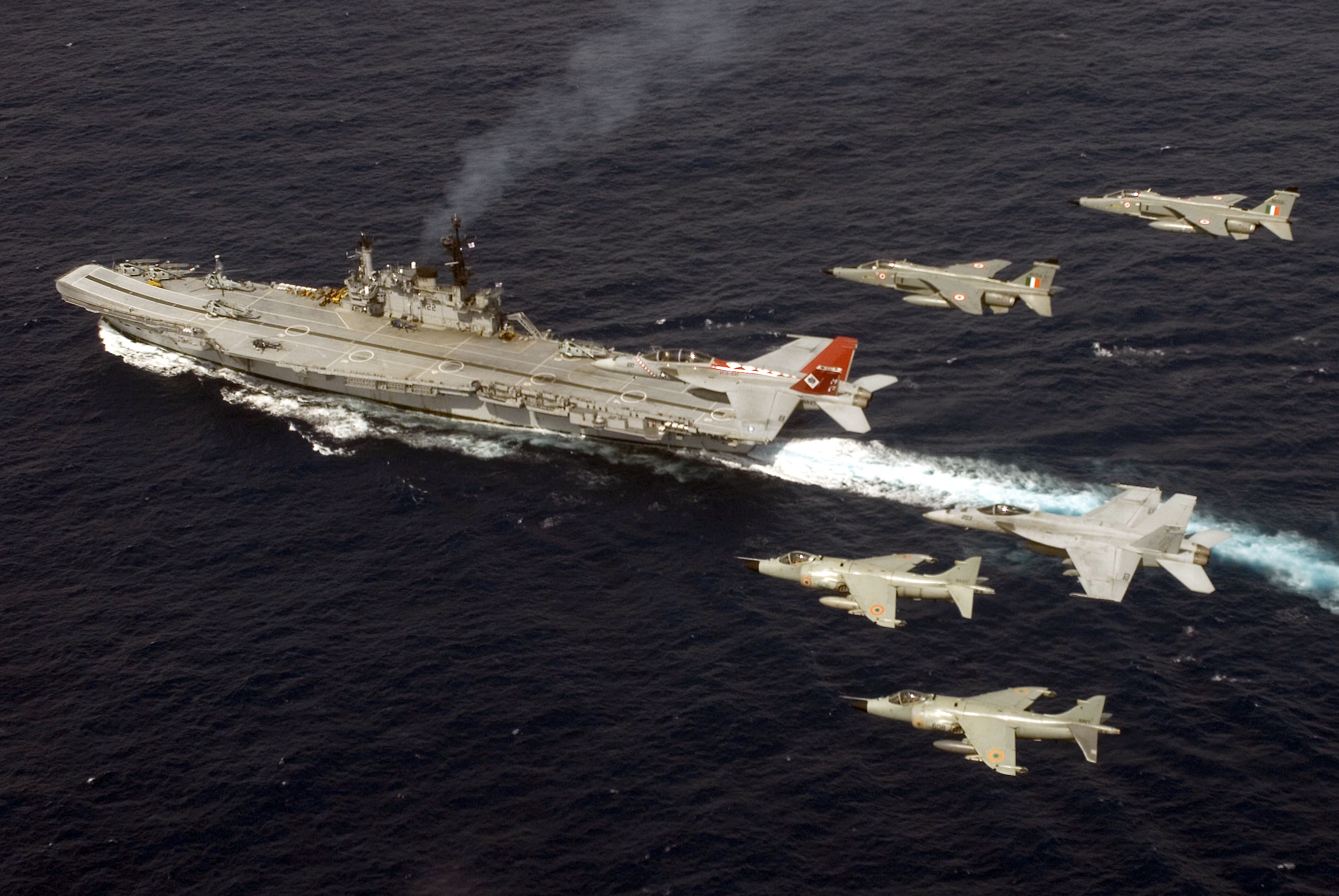
CORRECTION: In a previous version of this post, the planned name of India’s indigenous aircraft carrier-II (IAC-II) program was incorrect. It is Vishal, not Vishnal.
The Indian Navy is accelerating the design and construction of its second domestic carrier as its oldest carrier leaves service next year, according to several local press reports.
The work to develop the carrier — thought to be called INS Vishal — has been given a top priority to shore up capability gaps in the service following the planned retirement of INS Viraat — the former U.K. Royal Navy carrier Hermes — some time next year, according to a Monday report in The Times of India.
“INS Viraat will be decommissioned after the International Fleet Review in Vizag in February 2016. It will not be cost-effective to go in for another major refit of INS Viraat, which was inducted from the U.K. in May 1987,” an official told the paper.
Vishal — the indigenous aircraft carrier-II (IAC-II) program — would take 10 to 12 years of construction and is seen as a hedge against China’s People’s Liberation Army Navy (PLAN) own domestic carrier program.
The PLAN has started to patrol more in the Indian Ocean in the last several years, which has prompted concern in Indian leadership.
The current IAC-II study will consider the type of propulsion for Vishal as well as determine the type of aircraft the Indians will need to field on the new ship.

So far, the Indians are reportedly leaning toward a nuclear powered carrier and have determined it will feature a catapult-assisted take-off but arrested recovery (CATOBAR) — in line with the current generation of U.S. Nimitz-class carriers (CVN-68).
India’s other carriers — the Soviet-built Vikramaditya and the domestically built Vikrant (IAC-I) — currently are built around a short-take off but arrested recovery (STOBAR) system which require a sloped “ski-jump” ramp to allow aircraft to take off.
A CATOBAR system would allow Vishal to not only launch heavier fighters than its current crop of Mikoyan MiG-29Ks but also heavier airborne surveillance aircraft.
The Indians have inquired about the inclusion of the General Atomics Electromagnetic Aircraft Launch System (EMALS) that will launch aircraft off the new U.S. Gerald R. Ford-class of nuclear carrier (CVN-78), according to a Monday report in Jane’s Defence Weekly.
In January, the U.S. and India agreed to “explore” sharing carrier technology and design and establish a working group under a larger bilateral agreement.
The help from the U.S. could do much to accelerate India’s carrier development program.
The conventionally powered 40,000-ton Vikrant is five years late, could be as much as $4 billion over budget and may not become operational until 2018.
A 65,000-ton nuclear powered CATOBAR Vishal would be an exceedingly more complicated shipbuilding program.
Under the accelerated timeline, Vishal could commission as early as 2033, according to Jane’s.





